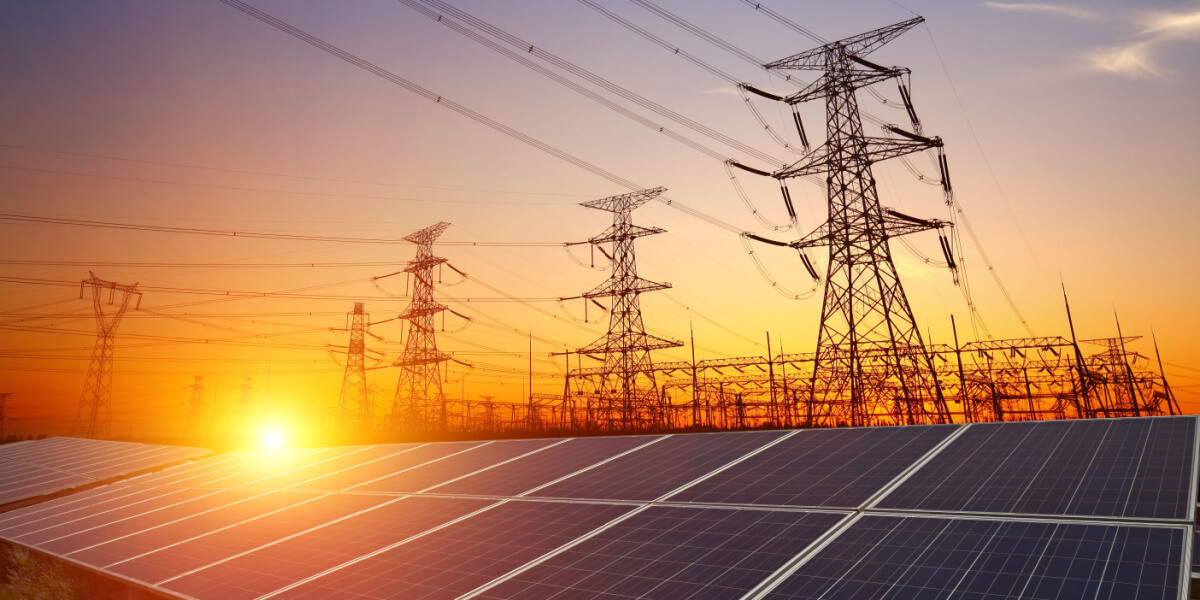KEY POINTS
- Solar back feeding occurs when excess solar energy is exported to the electricity grid, instead of used by your home or stored in a solar battery.
- Solar energy that is fed back to the grid can be exchanged for a small credit on your electricity bill, calculated in cents per kilowatt hour (c/kWh).
- Although back feeding can help lower your power bills, investing in a solar battery to store your excess solar energy may be more cost-effective in the long run.
In this guide, we explain how solar back feeding works and whether there are any potential cost benefits.
When considering whether to jump on the solar bandwagon, it’s important that you fully understand what it is you’re signing up for. Back feeding is just a small part of that. But what is it? And how could it benefit you?
This Canstar Blue guide covers everything you need to know about solar back feeding, from costs to implementation and, of course, the financial benefits.
On this page:
Advertisement
What is ‘back feeding’ in a solar system?
Back feeding is when excess solar energy is ‘fed back’ into the electricity grid in exchange for a solar feed in tariff (FiT). This is also known as exporting or feeding into the grid.
In order to back feed, you’ll need to have a grid-connected solar system and generate more electricity than your household uses. If you have a solar battery installed, any excess energy generated beyond its capacity can also be back fed.
How solar power feed back into the grid?
Essentially, most households with solar will have a mains-grid connected system, meaning they can draw electricity from the grid at times when their solar energy generation doesn’t match the needs of the household. In turn, any excess electricity produced by the solar system can be fed back into the mains grid in exchange for a feed-in tariff (FiT).
In some areas, there may be a limit on the system size a household can install for back feeding. As such, it may be worth checking what your options are with your energy distributor prior to installation.
Can I sell excess solar back into the electricity grid?
If your solar system is grid-connected, then yes, any excess solar power can be fed back into the grid in exchange for a small bill credit. This payment is set by your electricity provider and is usually paid for in cents per kilowatt hour (c/kWh).
However, it’s important to keep in mind that these credits are generally only set between five and 10 cents, although some higher FiTs may be available. These high FiTs are typically only offered on solar-specific electricity deals, and may come with limits or eligibility requirements. We’ve listed some of these offers currently available below.
Solar Plans and Prices
Here are some of the cheapest solar-specific deals from the retailers on our database. These costs are based on the Ausgrid network in Sydney but prices will vary depending on your circumstances. We show one product per retailer, listed in order of lowest price first. Annual price estimates assume general energy usage of 3900kWh/year for a residential customer on a single rate tariff. Price estimates exclude solar feed-in tariff credits. These are products from referral partners†. Our database may not cover all deals in your area, and please check retailer websites for up to date information.
Here are some of the cheapest solar-specific deals from the retailers on our database. These costs are based on the Citipower network in Melbourne but prices will vary depending on your circumstances. We show one product per retailer, listed in order of lowest price first. Annual price estimates assume general energy usage of 4000kWh/year for a residential customer on a single rate tariff. Price estimates exclude solar feed-in tariff credits. These are products from referral partners†. Our database may not cover all deals in your area, and please check retailer websites for up to date information.
Here are some of the cheapest solar-specific deals from the retailers on our database. These costs are based on the Energex network in Brisbane but prices will vary depending on your circumstances. We show one product per retailer, listed in order of lowest price first. Annual price estimates assume general energy usage of 4600kWh/year for a residential customer on a single rate tariff. Price estimates exclude solar feed-in tariff credits. These are products from referral partners†. Our database may not cover all deals in your area, and please check retailer websites for up to date information.
Here are some of the cheapest solar-specific deals from the retailers on our database. These costs are based on SA Power network in Adelaide but prices will vary depending on your circumstances. We show one product per retailer, listed in order of lowest price first. Annual price estimates assume general energy usage of 4000kWh/year for a residential customer on a single rate tariff. Price estimates exclude solar feed-in tariff credits. These are products from referral partners†. Our database may not cover all deals in your area, and please check retailer websites for up to date information.
Do I still receive a feed-in tariff if I’m renting?
This entirely depends on the terms and conditions of your rental agreement. If the electricity bill is in your name, you will likely receive the rental’s feed–in tariff. However, If you live in a townhouse or apartment, you may require a separate meter to the complex in order to receive this tariff. This is because your electricity usage and solar exports will need to be measured and billed accurately.
In some instances, the landlord may also decide to keep the account under their name and receive the feed-in tariff. These arrangements however, are usually discussed prior to signing the lease, so unless otherwise specified, it is safe to assume the renter could be eligible to receive the credits from exporting electricity.
Read More: Is it a good idea to put solar panels on your investment property?
Should I store my solar energy instead of back feeding into the grid?
An alternative to solar back feeding is to store your excess power in a battery for use at a time when solar production is not as high, such as the late evening. With solar feed-in tariffs at an all-time low, more households may be swayed to believe that a battery is now the more attractive route when it comes to maximising solar power savings.
If your household is not using anywhere near the amount of electricity being produced by your system, then it may be more cost effective to store this energy for use at a later date. For example, if you are on a time-of-use tariff, you could charge your battery to use during peak periods where grid power is more expensive.
Whether this will actually prove beneficial for your household however, will depend on your energy usage habits. This is when talking to a solar installer for a quote can become quite useful.
If you do decide to take the leap with a solar battery, then be sure to check out our solar installers guide below. The installers listed here have been rated as some of the best by everyday Aussies, and may be able to help you get started on your journey today.
Image Credits: pan demin/shutterstock.com




Share this article